What if your aches and pains could go away and you could look five pounds lighter? For many of us, our posture and muscular imbalances create those aches and pains and force our guts to stick out, creating the loathed “Thanksgiving-belly” year-round. We allow our lives and habits to wreck our postural alignment, and then wonder why we ache, feel old, and can’t get rid of that stomach “pooch.” I’ve talked about the importance of posture before, and although it doesn’t get much glory or get you your coveted beach body, good posture can help alleviate pain and help get you a strong foundation on which to build that six-pack!
What is “Mom Posture”?
This article will focus specifically on “mom posture” which consists of rounded shoulders, a forward head position, and an anterior pelvic tilt. Moms are troopers. After carrying the baby in utero, they then carry, nurse/feed, pick up after, and change the baby, etc. – mostly in a hunched position. After giving birth, muscles are weak, tired, stretched or shortened, and need to be rehabbed back to normal.
If you’re not a mom, don’t feel left out! These postural imbalances are also found in desk jockeys who hunch over their desks all day, people who have suffered injuries or have weaknesses, and people who have hunched since childhood.
If you feel like any of these describe you, this article should help you get realigned! These stretches and exercises should help you feel better and hopefully look slimmer, guys and gals alike!
Do All Moms Have It?
Mom posture isn’t a one size fits all deal, but it’s probably safe to say most moms have rounded shoulders. Some moms have a posterior pelvic tilt instead of an anterior one, so figure out which one you are by checking out this link. If you have a posterior one, skip the exercises I include for pelvic tilt in this blog and see the resources below!
This is a pretty complicated topic, and I’ll keep it as simple as possible. However, I still maintain the notion you should get assessed by a professional and get a personal corrective plan to really fix imbalances. I know that may not be realistic for everyone right now, so I hope these exercises work for you!
Exercises To Help Correct Rounded Shoulders
Doorframe Stretch
Rounded shoulders are caused by weak back muscles and tight chest muscles. To loosen up the chest muscles, you can try this
doorframe stretch:
Line your elbows and hands up with the door frame and step through, going only until there’s a stretch. Don’t force your way through farther if there’s pain. This will help loosen your chest muscles which may be pulling your shoulders forward. Hold for 20-30 seconds.
**BONUS exercise: This is another great chest stretch, if you happen to have time to just lie around on a foam roller or blanket:
Make sure your head/neck are supported- I ignored that once and was quite dizzy when I stood up! Start by sitting on the edge and walking yourself back. The blanket/roller should be along your spine. Lay your arms out perpendicular to your body. If you feel tingling or numbness in your hands, prop your arms up on a blanket. Start with 30-60 seconds, depending on how you feel. You can work your way up to more.
Click the Image below to be taken directly to Amazon or the seller directly (we get a small commission if you decide to make a purchase)
Band Pull Aparts
To work on strengthening your back muscles, you can try the band pull apart if you have an elastic band. These will help strengthen your rotator cuff and scapular stabilizer muscles, which will help pull your shoulders into correct alignment.
Have your feet shoulder-width apart, knees slightly bent (not locked) and keep your spine in good alignment. Think about keeping your ribs over your hips, so your hips aren’t flared out. Pull the band back to even with your torso in a slow and controlled manner, pause, and return to the front. Keep your arms straight throughout the movement. Start with 1 set of 10 reps, and try to work your way up to 2-3 sets.
Click the Image below to be taken directly to Amazon or the seller directly (we get a small commission if you decide to make a purchase)

Scapular Pushups
Scapular Pushups can be challenging, but they are really helpful for strengthening your scapular stabilizers and rotator cuffs, which will help you keep your shoulders back.
Start in pushup/plank position, but have your hands a little closer together (under your shoulder blades instead of shoulders). Without bending your arms, squeeze your shoulder blades together, and then release and return to the starting position. If this is too challenging, you can make it easier by doing it on your knees, a couch or table, or a wall. Start with 1 set of 10 reps. Work your way up to 2-3 sets. Make sure you start out with the modification that you can complete all the reps correctly.
—> Being in plank position can be dangerous if you your abs haven’t properly healed from pregnancy. Read more about that here!
Wall Slides
Wall Slides have been the most challenging for me , but they are great for strengthening your scapular muscles.
Stand with your back to a wall, trying to keep your upper back and butt in contact with the wall. Walk your feet about 12-18 inches away from the wall. Lift your hands over your head and try to press your forearms into the wall. Slide your arms up and down the wall, by squeezing your shoulder blades. Focus on your scapular movement, and don’t fret if you can’t touch your arms to the wall. Think about starting with your hands in an “I” shape and dropping them to a “W.” Start out with 1 set of 10 reps. Work your way up to 2-3 sets.
Exercises To Help Correct Anterior Pelvic Tilt
Anterior pelvic tilts are linked to tight hip flexors and erector spinae, and weak rectus abdominis and glutes.
Hip Flexor Stretch
Performing this hip flexor stretch can help decrease the tightness in your hip flexors:
Start in a half kneeling position, with your knee on the floor placed directly under your hip. Tuck your hips under and lean forward over your kneeling leg, keeping your back straight. You will feel this in the hip of the leg on the floor. Hold for 20 seconds.
Glute Bridge
Strengthen your glutes with a glute bridge:
Start out lying on the floor with your knees bent and heels close to your butt. Press your heels into the floor, which will bring your butt and hips up. Keep your core tight and hips high. Hold each rep for 5 seconds. Do 1 set of 10 reps. Work your way up to 2-3 sets.
Plank
You can increase your rectus abdominis (RA) strength (and tone and tighten your core) with a good ol’ trusty plank! If you can’t hold good plank form, then you’re not ready for a floor plank. Start with a plank on a couch, or join the fit tutor to get detailed instructions and modifications. (If you have Diastasis Recti, skip the plank and do the next RA exercise.)
For a plank, get on the floor on your stomach, with your forearms on the floor. Keep your elbows directly underneath your shoulders and toes curled under. Press up through your shoulders to bring your core up, so your body is in a straight line from head to toe. Squeeze your butt and core, and think about pulling your elbows and toes towards each other. Once your body is no longer in a straight line your form has broke and you should rest. Go until you break good form and work on increasing your time in a stable, correct plankity-plank!
—-> You may need to work on your core and pelvic floor post-pregnancy before planking is safe! Read more about that here.
Dead Bug
Another RA exercise is a dead bug. This helps your core pull your hips back so you can keep a neutral spine.
Lie flat on your back with your feet flat on the floor. Think about contracting your lower abs into the floor, and extend one leg out straight. Don’t let your leg touch the ground; just let it hover a few inches over, and then bring it back to the starting position. Repeat on the opposite leg. To make it more challenging, you can lift your arms over your head as you move your legs. Start out with 5 reps on each side, making each rep last about 5 seconds. Work your way up to 2-3 sets of 10, and move on to a different variation.
Hip Hinge
It’s also good to practice a hip hinge. I do not have time (or maybe the average person doesn’t have the attention span? :)) to explain the importance of the hip hinge right now, but if you are a fit tutor member then you hear that phrase in a LOT of videos! :)
This will teach proper movement pattern and help fix current and prevent future problems. Do 10 reps, and work your way up to 2-3 sets of 10. Don’t be shy- have someone watch you to make sure you are doing it correctly. (Preferably someone you know??!)
Start out just a few inches away from the wall and sit back (keeping your back in neutral spine) to touch your butt to the wall. Once you feel comfortable with that movement, step a few inches out and try again. Your knees are bent, but the movement is all from your hips, driving them straight back to the wall. If you have a bench or ottoman, place it behind your legs- it will help keep you from squatting!
Exercises To Help Correct Forward Head Position:
Chin Tuck
Performing a chin tuck will stretch out your tight neck muscles while strengthening postural muscles to help keep your head where it should be!
Stand with your back straight against the wall, with your feet about 3 inches away. While keeping your chin down, pull your upper back and back of head to the wall. Hold for 5 seconds and return to the starting position. Start with 1 set of 10 reps, and work your way up to 2-3 sets of 15-20 reps. Once you get the hang of the position you can do this at your desk or in your car while sitting down. This article has some more info that might be helpful.
**Side note: This is when a double chin is supa-cool!
Many of the rounded shoulder exercises will also help with a forward head position.
The Plan
I recommend doing these exercises a minimum of 3 days a week for the reps and sets described. These are definitely NOT the only recommended exercises you can do for these postural problems, so I’ve linked more resources below. I picked a reasonable amount for the busy person, or maybe for someone who is similar to me– I can find all the time in the world to lift, but when it comes to postural correction I suddenly am very busy ;) Taking the time to do these will DEFINITELY help. It’s a gradual process, but you will see results if you do them consistently!
Please share this with any fellow mother or desk jockey who you think could benefit from these exercises!
NEW on The Fit Tutor is a Postpartum Workout Program! If you’ve recently (or within the last few years!) had a baby, check out this program that rebuilds your core and pelvic floor, as well as helps you flatten your stomach and lose weight! $49 for just the program (which includes Nutrition Course, Workout Creator, Exercise Library, Meal Plans, and my Weekly Workouts and Get Fit Program for once you finish!). Or you can sign up for a full lifetime membership which includes all of these things + all my workout programs!
Also NEW: I’ve also created a few Posture warm-ups to complete before workouts that target the areas mentioned in this post!
I love being on this journey with you!
Leave a comment about YOUR struggle with posture, or report back after trying these exercises! Also, ask any questions you might have!
Also, for all my HIMYM fans, life is short and you should feel good and do awesome air kicks. Hopefully, this will help you and you will celebrate with a victorious air kick!
Further Resources:
Anterior Pelvic Tilt:
T-Nation- Trouble with Correcting the Tilt
Up Your Asana- Erector Spinae Stretches
Fix Knee Pain- Anterior Pelvic Tilt
Rounded Shoulders & Forward Head Posture:
Primally Inspired – 6 Stretches to Prevent Rounded Shoulders
Exercisebiology.com- Exercises to Correct Forward Head and Shoulder Posture
T Nation- Heal That Hunchback
Posterior Pelvic Tilt
Exrx.net- Posture (scroll down to posterior pelvic tilt)
Men’s Health- Strengthen your Psoas
Knee Pain Explained- Glute Stretches
Best Massage etc- Hamstring Stretch
Wikihow- Strengthen your Quads Without Weights
***Disclaimer: Don’t start ANY exercise program without consulting a doctor first. I’m not a physical therapist, so these exercises are to help with posture, not to diagnose or treat any physical ailment! I definitely recommend seeing a doctor first, and also seeing a personal trainer to give you a specific postural analysis and personalized plan.
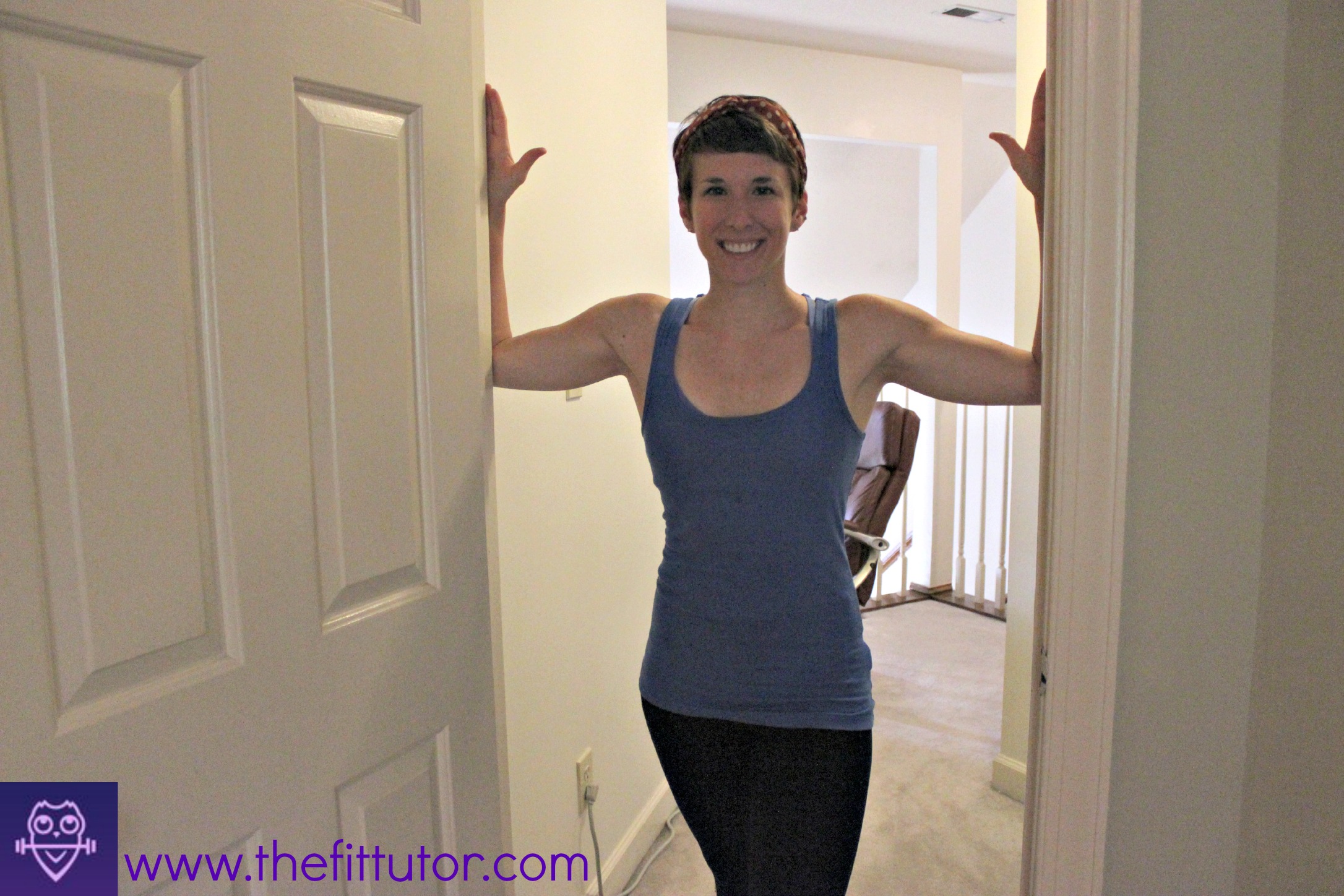
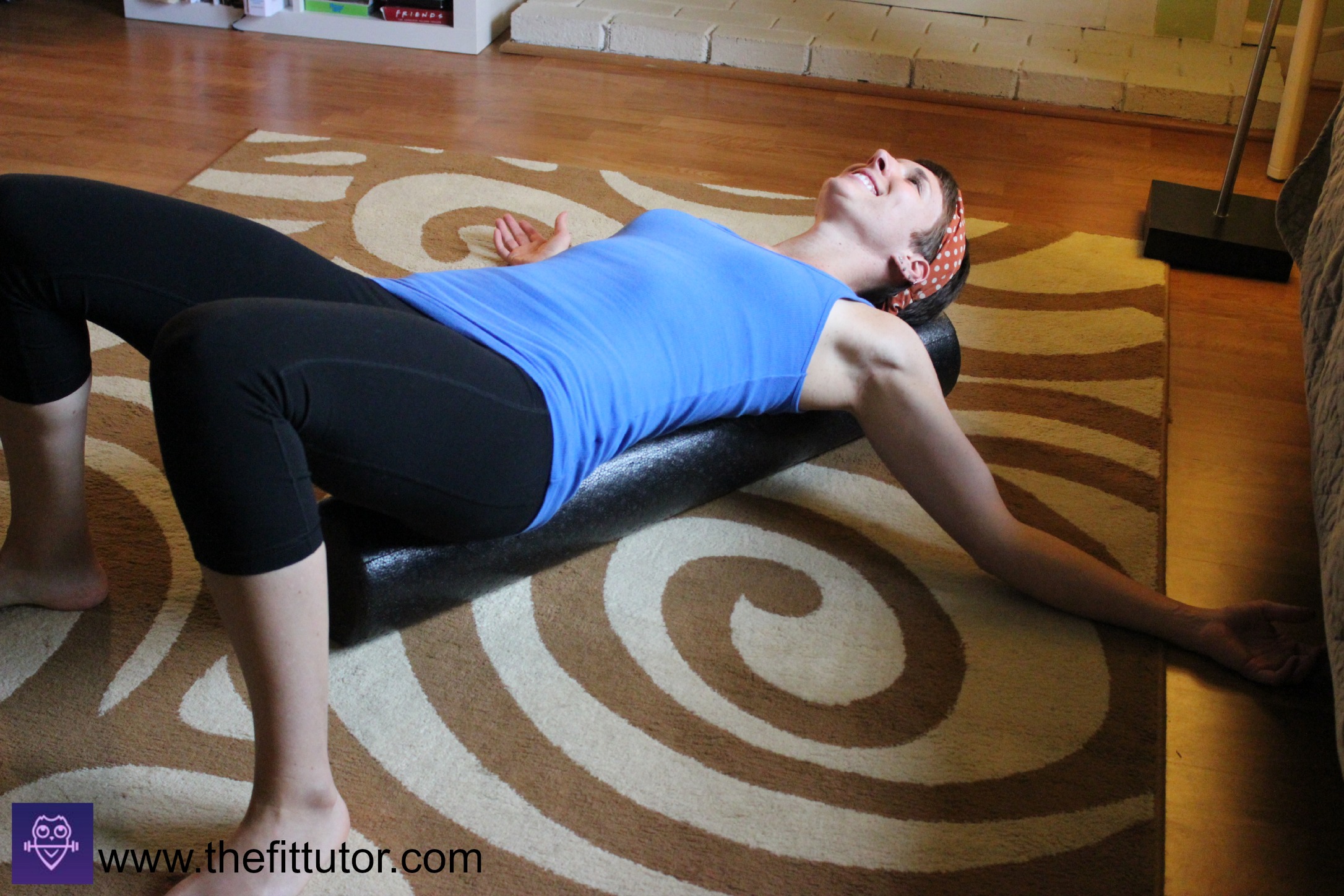

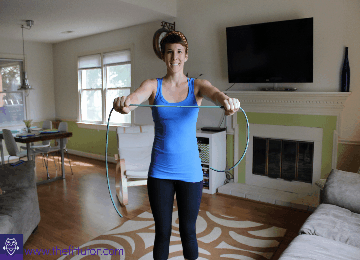
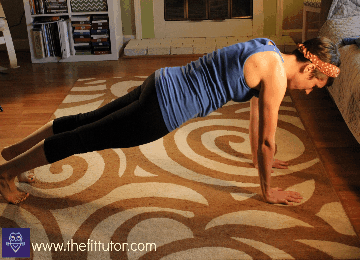
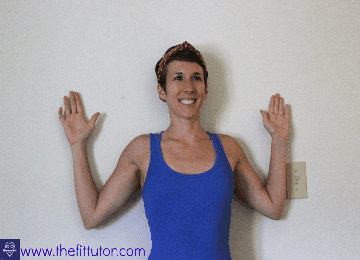
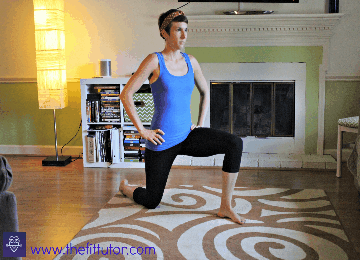
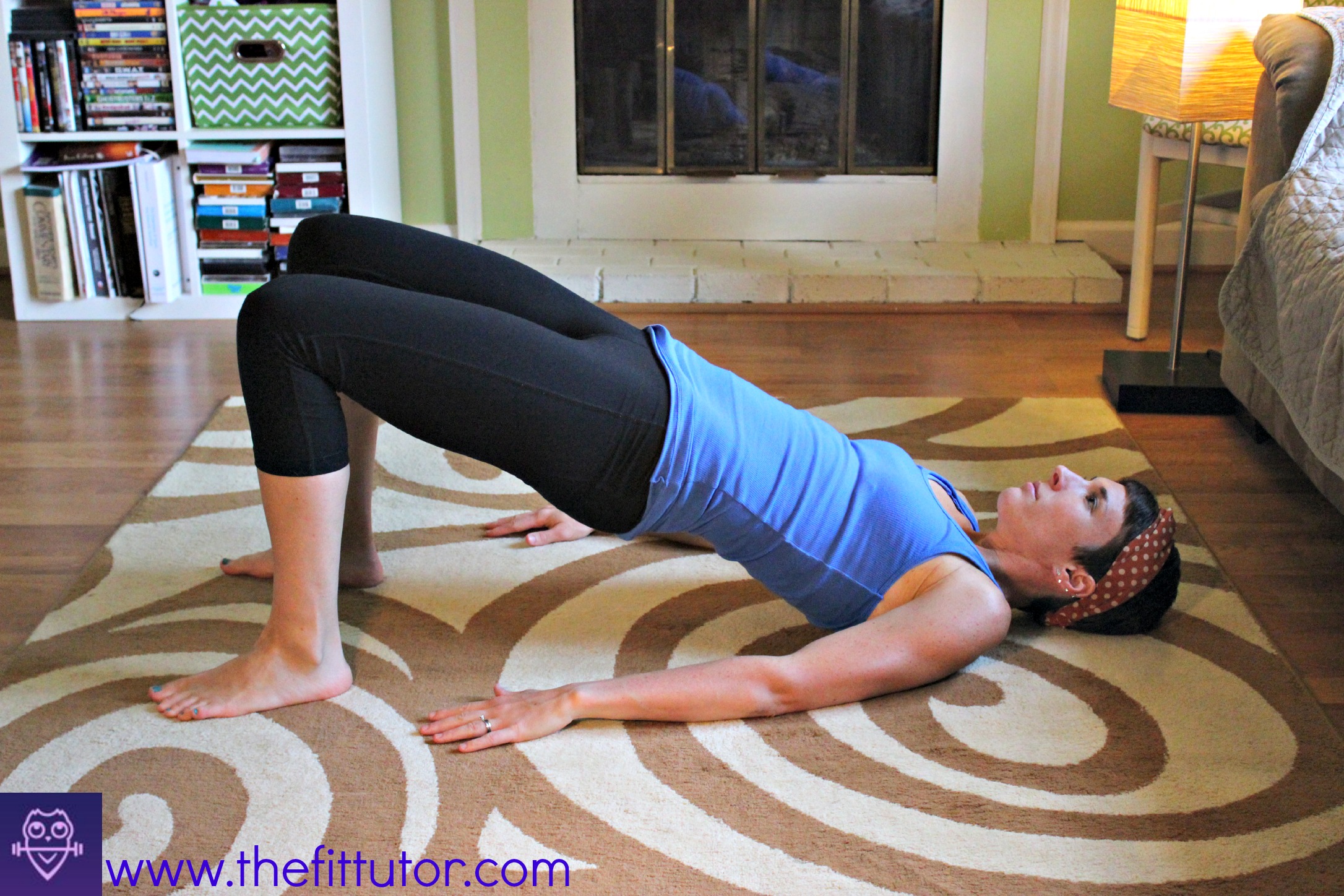
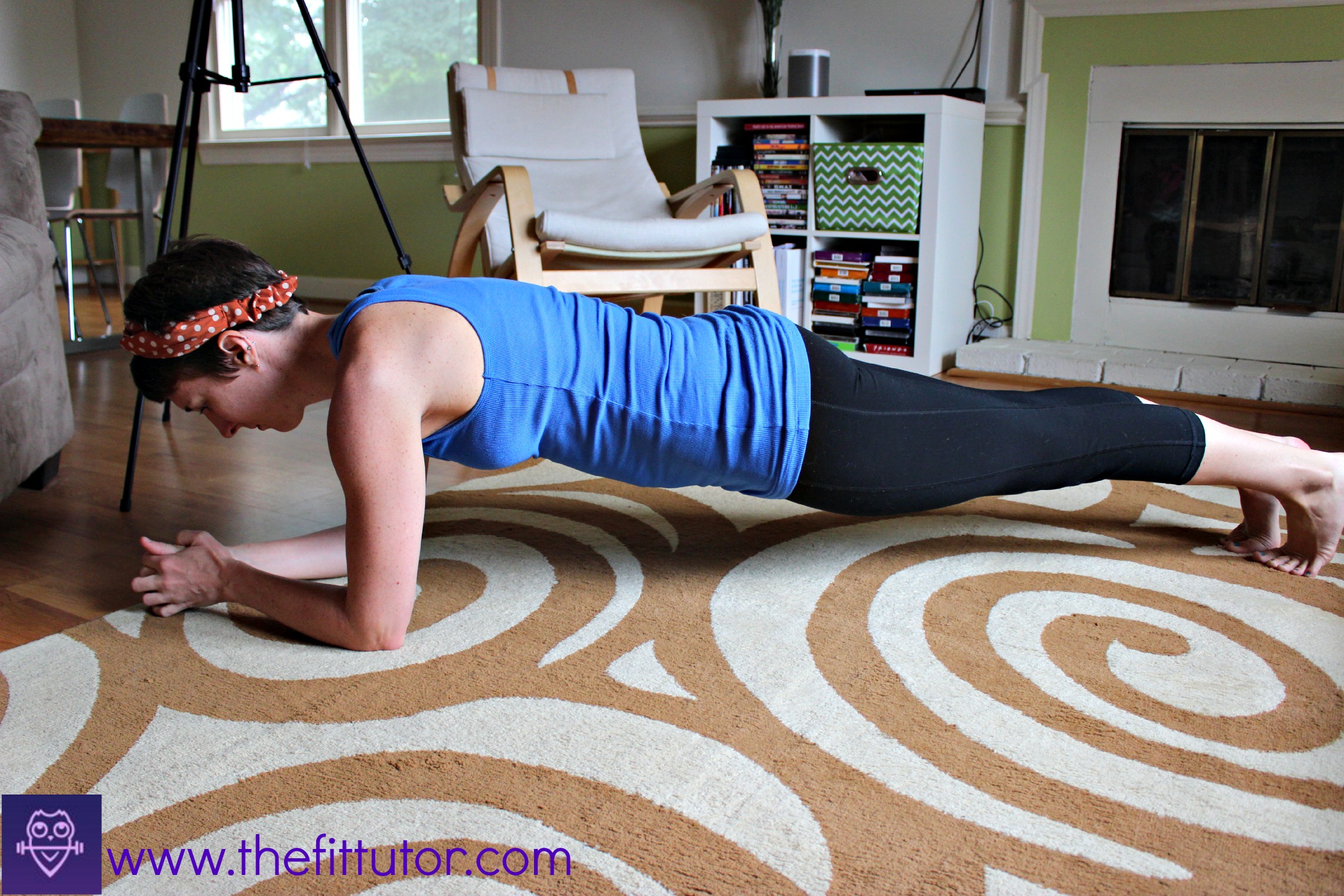
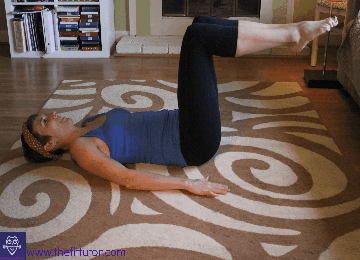
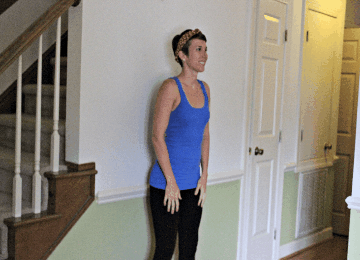
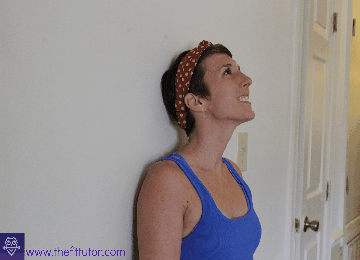
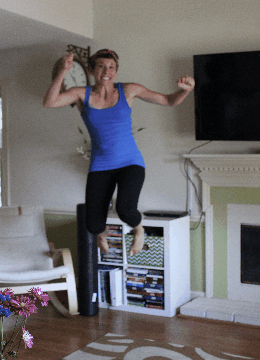

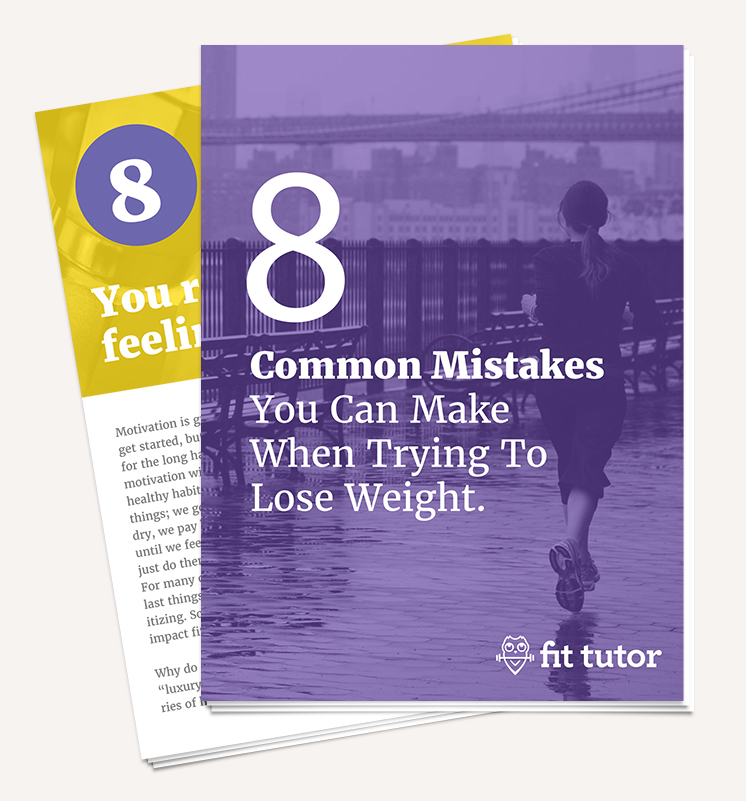
Great exercises for posture! I love that one you show on the foam roller – I do that one a couple of times a week and the band pull aparts. I am going to have to try the wall arm slides and the hip hinges – have never done those before.
Thanks Kimberlee! :) I LOVE the foam roller stretch! It has definitely become one of my favorites! The arm slides are surprisingly hard if you have forward rounded shoulders! Let me know how you like them! I think I’ve seen the best results from the scapular pushups! They are hard, but I feel like the build strength quickly to help keep your shoulders back :)
As a physical therapist treating patients all day long for postural imbalances I must say; you’ve truly hit the nail on the head. These 10 are enough to fix most problems if done diligently. Kudos
My 4 year old daughter started mouth breathing 6 months ago. Chiropractic adjustments haven’t helped. She now has swollen (not inflammed) tonsils (? and adenoids) and the steroid nasal spray and Claratyne (have fever medicine) didn’t help. I think it is related to how she squats when playing. She squats, feet flat on the floor, feet pointing out and leans over her bent legs and her whole back ends up curved, especially higher thoracic spine, like in kyphosis. Love to know your thoughts on that, whether it is changing how her jaw sits. She has slight overbite. thanks. Sandra
Thank you for these great moves. I learned some at a physical therapist but it was $50 a visit, w insurance. I am finally motivated again to stay consistent and feel/look better. I am a stay at home mom after working at a desk (improperly) for 8 years. I’m always slouched over and I have a lot of pain in my neck and shoulders. Here I go…day one of getting back to health!
That’s awesome Misty! I hope day one went well! :) I hope these exercises work well for you- they are effective if you do them consistently! And let me know if you need anything on your new journey to health! So exciting!
Thanks for your upbeat demos:) This describes my posture to a T! Hopefully with time I’ll be able to improve it:)
Thanks for your comment Cierra! Keep going with these exercises, and let me know if you have any questions! I’m excited for you! :)
Hi Allison, Thank you for your tips. My wife is looking for some stretches and exercise to improve her posture after giving birth. Now she keeps complaining about back pain. I hope your tips will help her to improve her posture and her back pain. I’m glad that I found your blog! Thank you!
Dillion, thank you so much for your comment! I hope these help- they definitely should alleviate some pain and help with posture. I also have a postpartum workout program that can help strengthen her core and back without putting pressure on her abs or any place stretched after giving birth! If these don’t fully help, that might be something to try. Tell your wife I think she’s a champ! :) Reach out if you guys have any questions. Congrats!!!!!
Allison, I love the postures you introduced here! May I know if I can translate your article into Chinese and post in my wechat account? I am running a non-profit jogging club named “energetic office” and am using my account to share exercise tips. Thanks a lot!
Hi Jing Liu! Yes, that’s fine as long as you credit me with the content and link back to the fit tutor :) Thanks- I’m so glad you found this helpful! What an awesome club you’re running!
With the chin tuck does your lower back need to be flat on the wall (mine has a bit of a gap bo matter how close I try) & are knees meant to be straight?
Hey Sharon! if you can’t keep your back flat that’s OK. Our spines have a natural curve so that’s OK! You should still get the benefits of the chin tuck- I would focus more on your upper back being against the wall. And yes, the hip hinge is the beginning of a squat- but it’s not actually squatting down. It would be what you do right before you squat- throw your hips back to make sure your body is in good alignment! In this exercise, you’re doing that motion without actually squatting down :) If you know you have good squat form, squats are also good for posture so you could do those too! I hope this helps. Thanks!
Also is a hip hinge essentially like a squat?
The rounded should posture became very bad recently. Hope I can get help with some of these exercises. The one for forward head..I can’t do it! I have the stretch band so hoping the exercise with that will help. I am 77 yr old very active skinny lady. I fixed hair for 30 years but then worked at a desk at a PC for 22 yrs. I do take dance which works my core but now have COPD. Am I fighting a loosing battle. I pray I can get better with exercise.
Hi Marty! Thanks for your comment! Yes, doing these regularly but easing into them should help! If you can’t do the fwd head exercise, you could lie down on the ground and get your neck used to being in that position. Just lie there, allowing gravity to help. From there you could press the back of your head into the floor and hold for 1/2 a second, and then let up. You could do this seated against a wall if getting on the ground is hard for you :) Good luck!!
Use bands was really helpful, i used them to for upper back and shoulders, thanks for sharing.
Thanks so much Susan! So glad you found these helpful! :)
“I loved this post! There are so many people who suffer from postural problems! I will bookmark it for future reference.
Thanks for posting!
“
Thank you for another excellent article. Where else may just anybody
get that kind oof information in such an ideal method off writing?
I have a presentation next week, and I am on the look for such info.
This covers most of the problems I have having at the moment, after birthing twins and caring for toddlers, my body is not aligned properly. I see a chiropractor but need some extra stretches to assist at home. Thanks for this valuable info!
From 1 very sore Mummy
Stefanie, thanks so much for your kind comment! I’m so excited you found these and will be able to do them to help you get balanced! And I’m glad you’re seeing a chiropractor, too. I hope you start to feel better again soon! :)
I have bad rounded shoulders. Would you please explain the foam rollers. I see the picture but cannot understand it. I did some of the other exercises and I am so glad I found your site.
I’m not the author, but I can tell you that you lay with the foam roller going down your spine and then stretch your arms out. A foam roller is a cylinder shaped piece of very hard and study styrofoam. People use them for stretches like this and rolling out the fascia around your muscles.
Thank you Jessica!!
Hey Marlene! Thanks so much for your question. You’ll want to get a long foam roller (around 36 inches) and lie with your back on top of it. Have your head at one end and your bum at the other and place your feet on the ground so you feel sturdy. With your palms facing up, bring your arms out to the side and try to rest them on the ground, and just hang out there for awhile! It will open up your chest muscles that are tight from your shoulder being rounded forward all day, and it feels amazing! Does this help? There’s a link to a foam roller in my store if you shop on Amazon ever! https://thefittutor.com/shop/
I’m glad you found this post helpful!
From a kneeling position, bring left leg out front with foot flat on the ground. Push body forward through the hips, stretching that right hip flexor. Hold for 30 seconds, then bring right arm straight up, slightly twisting body to the right and leaning to the left to go further into the stretch.